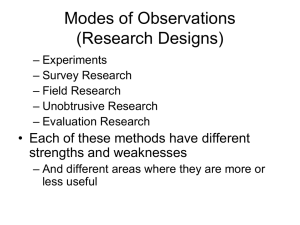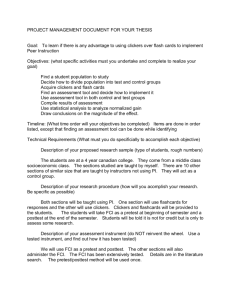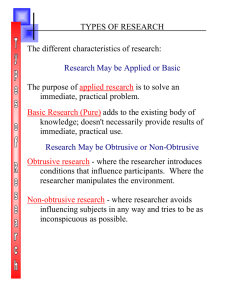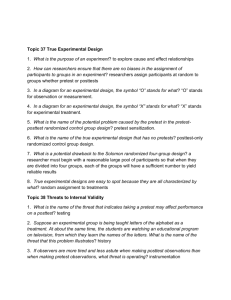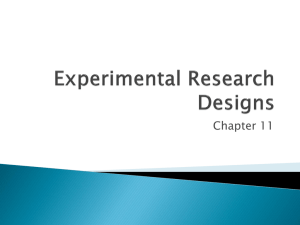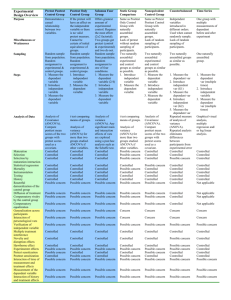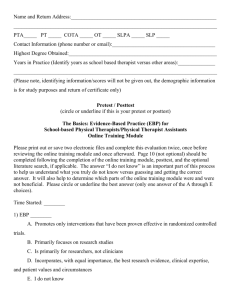Validity
advertisement
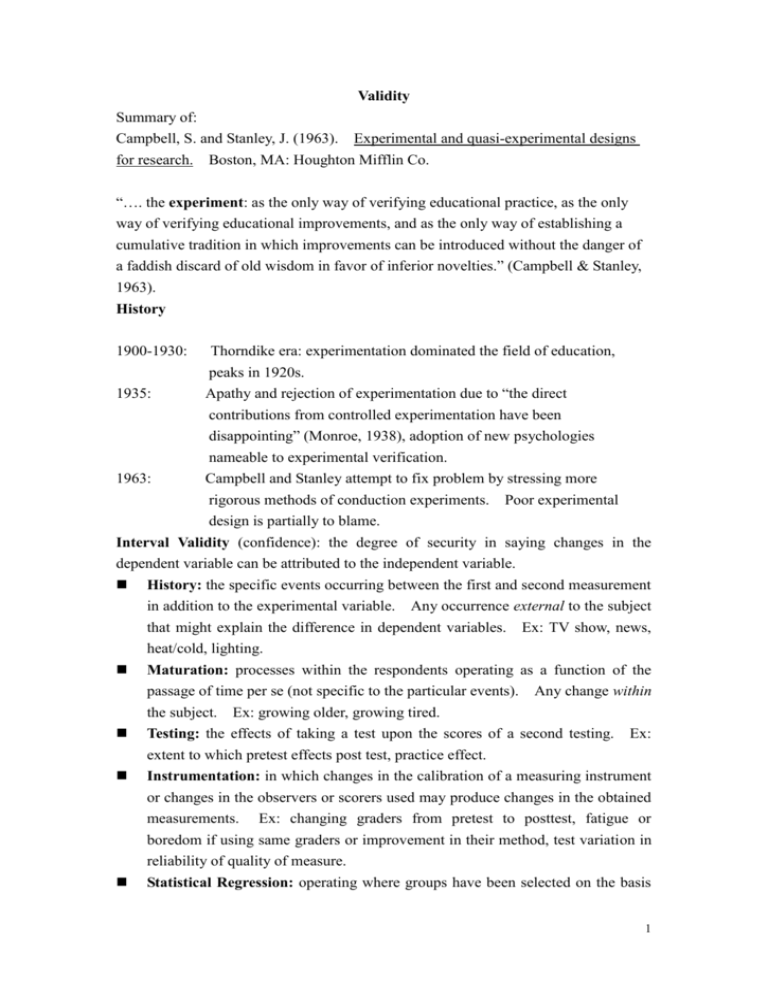
Validity Summary of: Campbell, S. and Stanley, J. (1963). Experimental and quasi-experimental designs for research. Boston, MA: Houghton Mifflin Co. “…. the experiment: as the only way of verifying educational practice, as the only way of verifying educational improvements, and as the only way of establishing a cumulative tradition in which improvements can be introduced without the danger of a faddish discard of old wisdom in favor of inferior novelties.” (Campbell & Stanley, 1963). History 1900-1930: Thorndike era: experimentation dominated the field of education, peaks in 1920s. 1935: Apathy and rejection of experimentation due to “the direct contributions from controlled experimentation have been disappointing” (Monroe, 1938), adoption of new psychologies nameable to experimental verification. Campbell and Stanley attempt to fix problem by stressing more rigorous methods of conduction experiments. Poor experimental design is partially to blame. 1963: Interval Validity (confidence): the degree of security in saying changes in the dependent variable can be attributed to the independent variable. History: the specific events occurring between the first and second measurement in addition to the experimental variable. Any occurrence external to the subject that might explain the difference in dependent variables. Ex: TV show, news, heat/cold, lighting. Maturation: processes within the respondents operating as a function of the passage of time per se (not specific to the particular events). Any change within the subject. Ex: growing older, growing tired. Testing: the effects of taking a test upon the scores of a second testing. extent to which pretest effects post test, practice effect. Instrumentation: in which changes in the calibration of a measuring instrument or changes in the observers or scorers used may produce changes in the obtained measurements. Ex: changing graders from pretest to posttest, fatigue or boredom if using same graders or improvement in their method, test variation in reliability of quality of measure. Statistical Regression: operating where groups have been selected on the basis Ex: 1 of their extreme scores. Any test score has two parts: Score= true score + error. The true score is subject’s actual knowledge and the error is due to guessing, mistakes or inconsistent error, physical wellness. Extreme scores will regress towards the mean. Ex: low on pretest will probably increase on posttest without treatment due to error in measure. Regression is a function of reliability. Selection Bias: resulting in differential respondents for the comparison group. Biases in the way subjects are assigned to the treatment groups from the sample. Ex: Higher IQ subjects assigned to experimental group, volunteers assigned to treatment. Experimental Mortality: differential loss of respondents from the comparison groups. Lose integrity of group since subjects are not of same level. Ex: large number withdraws from experimental group due to poor treatment. Interaction of Selection with 1-5, 7: interaction of selection bias with other six factors may result in treatment bias. Ex: selection and maturation interact to cause difference in dependent variable. External Validity (generalizability): to what populations, settings, treatment variables, and measurement variables can the effect be generalized? Reactive or Interaction effect of Testing and Treatment: pretest might increase or decrease the respondent’s sensitivity or responsiveness to the experimental variable and thus make the results obtained for a pretested population unrepresentative of the effects of the experimental variable for the unpretested universe from which the experimental respondents were selected. Ex: if posttest for experimental group is significantly better than for control may be due to pretest and not treatment. Interaction of Selection and Treatment: were subjects selected in a represent manner from the population you are generalizing to? Ex: sample from which treatment and control groups are assigned is made up of upper class Chinese males, but the population is all Kaohsiung schools. Reactive effects of Experimental Arrangements: treatment disrupts routine enough that the difference in performance on the independent variable is due to knowledge of being observed or tested. Precludes generalizations about the effect of the independent variable upon persons not in the study. Ex: non-routine pretest and random assignment lead to non-natural groups. Multiple-Treatment Interference: occurs when multiple treatments are applied to the same respondents, because the effects of previous treatments are not usually erasable. Effect of carry over fro one treatment to the next and order effect. Ex: first treatment introduces boredom effect for next treatment. 2



